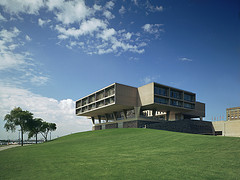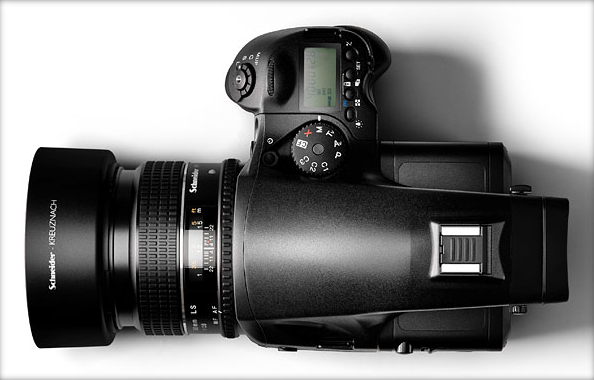What gear do you really need for architectural photography?
posted Thursday, April 17, 2014 at 11:59 AM EDT

Buildings seem like they make great models. They’ll stand in the same place until the light is perfect, and never complain. But as with most disciplines, there’s more to architectural photography than it would seem.
The Phoblographer posted a list of the kind of gear that serious architectural photographers use—and it’s all medium-format equipment. It makes sense: For starters, the detail is amazing. Also, the crop factor is less than one, so lenses appear wider than their 35mm focal-length equivalents—that makes it easier to capture an entire structure in a single frame without having to set up too far away.
Gampat recommends a slew of PhaseOne gear, including a body, CMOS back, and a 28mm f/4.5 lens, which is massively wide on this sensor. He also notes that a smooth, ergonomic pistol-grip tripod head makes life much easier, and that post-production time is an absolute must, mainly to correct the distortion from super-wide lenses. Curiously, the CMOS back that The Phoblographer recommends is smaller than the Kodak CCD sensors used in medium-format cameras from a few years ago. The new design (probably made by Sony) gains some ground in low-light quality, but loses some of the width that could come in handy for massive factories or skyscrapers.

Of course, you don’t really need such high-end gear to start taking great pictures of buildings. Over at Digital Photography School, working architectural photographer Darren Rowse says that he uses a crop-sensor DSLR and an ultra-wide 12mm Sigma lens—though he photographs interiors as often as exteriors, as he does much of his work for real-estate firms. His best tip: Wear clean socks, because you’ll need to take your shoes off in many homes.
Architectural photographers: Any tips for aspiring shooters? Chicken or egg question: At what point does it make sense to leap to medium-format gear? And do you want as wide of a field of view as possible?
(Via The Phoblographer)